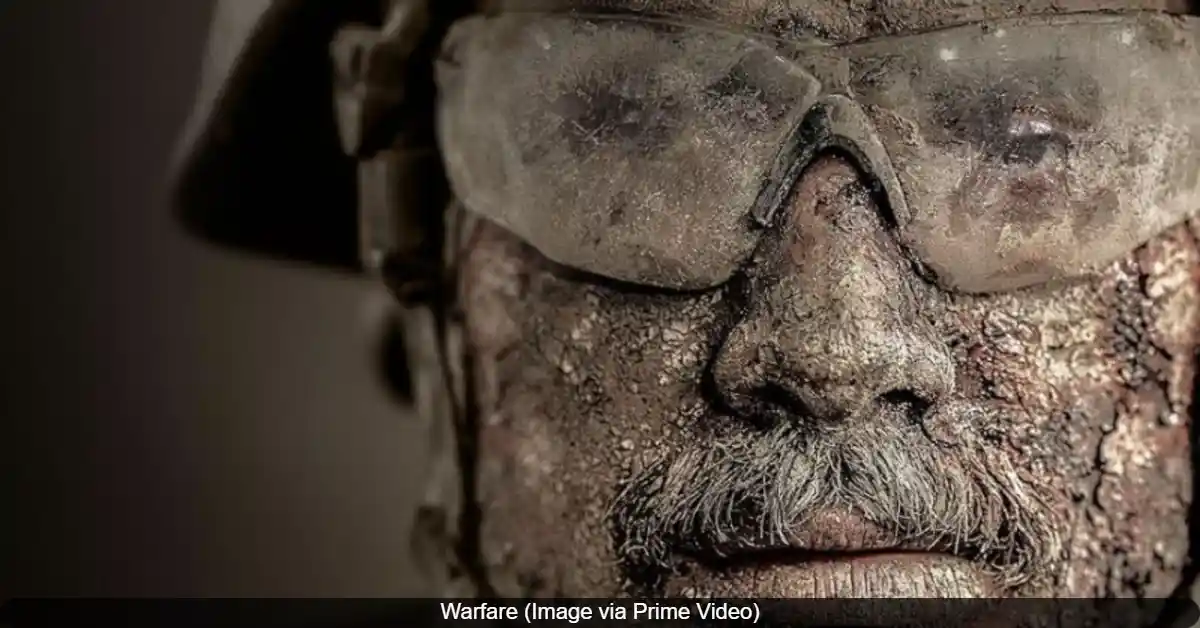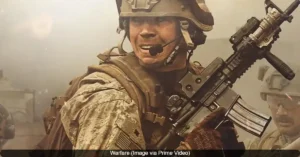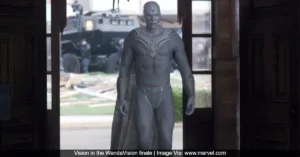The war film Warfare, co-directed by former Navy SEAL Ray Mendoza and acclaimed filmmaker Alex Garland, delivers a brutally authentic portrayal of a real-life 2006 mission in Ramadi, Iraq, that went terribly wrong. Unlike traditional war movies that often glorify combat, Warfare immerses viewers in the chaotic, visceral, and psychologically shattering experience of modern warfare, culminating in an ending that reflects the harsh realities of conflict without clear winners or losers. The film is dedicated to Navy SEAL Elliott Miller, who suffered life-altering injuries during the operation and lost all memory of the event, serving as the emotional core for this gripping cinematic project.
What Happens in the Ending of Warfare?
The finale of Warfare is intentionally abrupt and unsettling, mirroring the unpredictable nature of real combat. After a grueling and chaotic firefight, the surviving U.S. Navy SEALs are finally evacuated by M2 Bradley tanks under a coordinated smoke screen and aerial support. However, there is no triumphant victory celebration. Instead, the film abruptly cuts to the Iraqi insurgents—portrayed as ordinary civilians—emerging from their homes to inspect the battle-scarred streets. This shift in perspective underscores the film’s theme that in war, there are rarely clear heroes or villains, only survivors and casualties caught in a cycle of violence. The final scenes emphasize the lingering impact of the conflict on both the soldiers and the local community, with no resolution or closure offered.
“I wanted to make something veterans could use as a stepping-off point, maybe for conversations that they wouldn’t otherwise be able to have,” Mendoza explained in an interview, highlighting the film’s goal to foster dialogue rather than provide easy answers .
The closing title card, “For Elliott,” pays tribute to the real-life SEAL Elliott Miller, who inspired the film. A post-credit montage features photos and footage of the actual SEAL team members involved in the 2006 operation, alongside the actors who portrayed them, blurring the line between documentary and narrative filmmaking.
The True Story Behind the Film
Warfare is based on the firsthand experiences of Ray Mendoza, who served as a Navy SEAL during the Iraq War. The film depicts a November 2006 mission in Ramadi, a city considered a stronghold of insurgent activity at the time. The SEAL team’s objective was to occupy a local Iraqi house to provide overwatch for a U.S. Marine operation, a common tactic during the war. However, the mission quickly devolved into chaos when insurgents attacked the team with grenades and gunfire, leading to severe casualties .
The character of Elliott Miller, portrayed by Cosmo Jarvis, is based on a real SEAL who sustained catastrophic injuries from an improvised explosive device (IED) explosion during the evacuation attempt. Miller lost a leg and suffered a traumatic brain injury that erased his memory of the event. Mendoza, who worked with Garland on the 2024 film Civil War as a military advisor, was driven to create Warfare partly to help Miller piece together the events of that day.
“When Elliott woke up, he immediately started asking questions,” Mendoza recalled. “He doesn’t have that core memory” .
The film’s production involved meticulous attention to detail, with actors undergoing a simulated SEAL boot camp and carrying 50 pounds of tactical gear during shoots to authentically replicate the physical and mental strain of combat. The dialogue is filled with military jargon, intentionally left unexplained to preserve realism and immerse viewers in the soldiers’ perspective .
Key Themes and Interpretations of the Ending
1. The Cycle of Conflict:
The ending’s focus on the insurgents reclaiming their neighborhood underscores the repetitive and unresolved nature of war. By showing both sides of the conflict, the film avoids politicizing the Iraq War and instead highlights the universal human cost of violence.
2. The Absence of Glory:
Unlike many war films, Warfare denies its characters a heroic arc. The SEALs’ survival is framed as a messy, chaotic retreat rather than a victory. This reflects Mendoza and Garland’s commitment to portraying war as it is experienced—a raw and often inglorious struggle for survival.
3. The Importance of Brotherhood:
Despite the bleak portrayal of combat, the film emphasizes the bonds between soldiers. The dedication to Elliott Miller and the inclusion of real SEALs in the credits serve as a tribute to the camaraderie and sacrifice of military personnel.
4. The Impact on Civilians:
The presence of Iraqi families trapped in the crossfire during the battle adds a layer of moral complexity. In the end, their relief at the soldiers’ departure subtly critiques the disruptive nature of foreign military interventions.
How the Film Compares to Other War Movies
Warfare distinguishes itself from other war films like American Sniper or Black Hawk Down through its hyper-realistic, real-time narrative structure and refusal to romanticize combat. Instead of focusing on strategic objectives or political context, the film zeroes in on the sensory overload and psychological toll of battle. The use of minimal music, immersive sound design, and shaky camera work places viewers directly in the midst of the action, creating an experience that is as disorienting as it is gripping.
Alex Garland’s collaboration with Mendoza brings a level of authenticity rarely seen in the genre. As one reviewer noted, the film “doesn’t just show you the horrors of war; it forces you to taste the dust and the choking panic, smell the fear and the cordite and the tinny metallic tang of spilled blood” .
Reception and Legacy
Since its release on April 11, 2025, by A24, Warfare has received critical acclaim for its unflinching realism and powerful storytelling. It holds a 92% rating on Rotten Tomatoes and has been praised for its technical achievements and emotional depth . The film’s box office performance, grossing $33.6 million worldwide, demonstrates its resonance with audiences seeking a more authentic representation of warfare.
For veterans, the film has served as a catalyst for conversations about trauma, memory, and the often-overlooked aftermath of military service. As one real-life SEAL involved in the mission, Joe Hildebrand, stated, “I don’t think any of us really started to heal until this movie” .
Also Read: Warfare Trailer OUT: Will Poulter, Joseph Quinn, Noah Centineo, and More Star in Brutal War Drama







